profile badges
recent achievements

Subscribed to BG News
Subscribe to the weekly BoardGaming.com newsletter (from the home page).
Subscribe to the weekly BoardGaming.com newsletter (from the home page).

I Own a Game!
Mark a game that you own by clicking the "Own It" button on a game page.
Mark a game that you own by clicking the "Own It" button on a game page.

It's All About Me
Edit your Gamer Bio via the "edit profile" page.
Edit your Gamer Bio via the "edit profile" page.

I Am What I Am
Select a gamer type in your profile
Select a gamer type in your profile

Show others what games you like best. Navigate to a game page and click on the "Favorite" button.


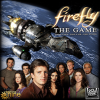












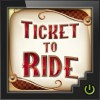
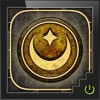
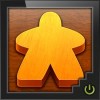

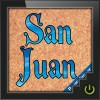
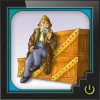
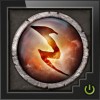
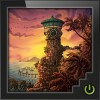
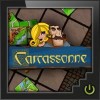


Flash Point: Fire Rescue
Publisher: Indie Boards and Cards
Game Designer: Kevin Lanzing
Artwork: Luis Francisco and George Patsouras
Players: 1-6 (Cooperative)
Ages: 10 and up
Playing Time: 45 minutes
Game Mechanics: Action Point Allowance, Dice Rolling, Pick up and Deliver, Variable Player Powers
Contents: One full color rules booklet with rules for family play and advanced rules, One 23″ x 16.5″ dual sided, mounted game board, 6 firefighter miniatures, 33 Threat markers, 18 POI markers, 24 damage counters, Eight door markers, 24 hot spot markers, 21 action markers, 3 heal markers, 6 hazmat markers, 3 vehicle markers, 6 player cards, 8 specialist cards, player aids, One D6, One D8
Suggested Retail Price: $39.99
Parental Advisory: Safe for children
Awards: 2012 Golden Geek Best Family Board Game Nominee, 2012 Golden Geek Best Thematic Board Game Nominee, 2012 Hra roku Nominee, 2013 Nederlandse Spellenprijs Best Family Game Nominee
The sweat stings your eyes as you struggle to keep your breath under control while you battle the raging structure fire that is moments away from a horrific conflagration. You clutch the young girl in your arms tightly as you dodge the flames that lick at your turnout gear, threatening to swallow you both up before you have a chance to break free of its clutches. The wall of fire is closing in, just a few more steps is all you need.
An intense and involving game, Flash Point: Fire Rescue is one of my favorite types of board games; a heavily themed, purely cooperative game that relies 100% on teamwork for a successful outcome. In this game, you play as a team of firefighter’s battling structure fires while rescuing victims trapped inside and bringing them to safety. Sounds simple right?
This game is fairly reminiscent of Pandemic in many respects with each player having a specific role (in the advanced rules) with unique abilities and the explosions, flashover’s, hot spots and flare ups working in similar fashion to the epidemics and outbreaks along with an evocative theme throughout the game. Unlike Pandemic, there is a pick up and deliver mechanic in this game to coincide with fighting the fires that will continue to plague the structure until you’ve rescued seven of the people trapped inside, four or more people are lost or the structure collapses around you.
Just as in Pandemic, the interaction between gamers at the table will be high as the collective group think is what drives the team forward and is a large factor in determining success. And yes, just as you can in Pandemic, this game can be played solo for those like me, who enjoy that added benefit.
Complete with both a ‘family’ and an ‘advanced’ rules set, Flash Point: Fire Rescue has done it right for any type of gaming group you play with. The family rules are simple enough to be grasped by young children with some guidance, yet offer enough freedom of choice while working through the decisions at hand to get minds racing both young and old. The advanced rules take things several steps further, complicating the map with new and more dangerous hazards yet keeping the mechanics of employing them on the board straightforward and simple.
Game setup is easy for the family game; the format is diagramed for you in the full color rules and takes only a couple of minutes to lay out on the board. This way you can easily setup the board and get to playing, allowing a familiar setup each time you play. With this format, the game is still random in many ways and offers enough replayability that you can easily get the mechanics down in no time and be chomping at the bit for a little more danger and chaos.
Using the advanced rules is where that chaos starts to show, before you even get to playing. Once again, setup is simple but now varied every time as it is all based on the grid system employed on the board . Using a 48 grid system (6 x 8) and a D6 and D8, you resolve where each fire marker, hot spot and Person of Interest (POI) marker is placed which gives a completely new layout every time. In the family rules you just place individual fire markers down in assigned grids, or random ones if you choose to roll for them. The advanced rules now introduce explosions in the setup, so you are going into a very involved structure fire when you roll up on scene and we’ll cover those further on in the advanced rules portion of this review.
Using the family rules, each player is a generic firefighter with 4 action points and identical abilities and limitations in battling the fire and saving lives. Everyone starts at a location of their choosing on a space outside the perimeter of the house where you can enter through any exterior doorway. Movement is simple, it costs 1 AP to move into an open space or one with smoke, 2 AP to move into a space with fire but you cannot end on a space with fire or you will be knocked down and sent back to the nearest ambulance spot outside of the house.
You move through the house knocking down fires with your hose, these fires come in two stages, smoke and flames. It takes two action points to extinguish a fire and only one point to remove smoke. Along the way you will come upon POI markers, distinguished by the question mark icon on them. Once you enter a space where the marker is, it is a free action to flip the token and see if it is blank (false alarm) or if it is a victim. Blanks are removed from the map and replaced by random dice roll placement, victims must be carried to an ambulance space outside of the home and it costs two action points to carry a victim.
You can reach victims trapped in rooms through doors that you’ll need to open but if you cannot get to them through a door that may be overrun with fire, as a firefighter you carry an axe so chop your way in! Beware though, every wall you destroy takes two tokens from a pool of 24 and when they run out, the structure collapses and you lose. Walls will also get damaged by explosions as the fire grows and spreads, so those tokens will rapidly diminish which leads to some tense moments late in the game as you are running up against what is essentially a timer. You have to balance the need to cut through a wall to save a potential victim with further detracting from the structural integrity of the building.
Once you move on to the advanced rules, you’ll find a lot more stress added to the game as things really heat up, pun intended. Using the advanced rules, the board starts out with random fires, explosions, hot spots and hazmat materials being placed before you ever enter the building. No longer are you dealing with the same stage as in the family rules, it’s a completely random one each time. There are also new attributes to the fires called hotspots and flare ups and you start each game with a varying number of hot spots based on player numbers. Where these hot spots get really nasty is when you roll to advance the fire and it advances onto a hot spot location, you then roll an additional time and lay more fire down at the newly rolled location as well and this is the flare up. This can happen multiple times if you roll for locations that contain hot spots, so this can chain very easily with some ugly rolls. Each time you roll for the location of the flare up, you also place a new hot spot marker so hot spots can be quite prevalent throughout the board increasing the likelihood of one of these chains to take place if you don’t contain the fire.
To combat all of this, players now choose specialist cards with variable powers that offer different capabilities to each firefighter, opening up different tactics. Here is a rundown of those specialties with a brief description of each.
Paramedic – 4 AP per turn. Can resuscitate a victim and lead them to safety rather than carry for 1 AP per movement.
Fire Captain – 4 AP, plus 2 Command Points per turn. Fire Captain can use their AP to command any other firefighter to move, open or close doors on the captain’s turn.
Imaging Technician – 4 AP per turn. Can flip any POI marker anywhere on the board for 1 AP each. This helps speed up identification of real victims and not waste time flipping over a false alarm.
CAFS Firefighter – 3 AP plus 3 free extinguish AP per turn.
Hazmat Technician – 4 AP per turn. Remove a hazmat from the board immediately, as long as the firefighter is on the spot of the hazmat for 2 AP.
Generalist – 5 AP per turn. No special abilities, one more AP per turn than average.
Rescue Specialist – 4 AP plus 3 free movement AP per turn. Chop only costs 1 AP rather than 2.
Driver/Operator – 4 AP per turn. Can fire the deck gun on the fire truck for 2 AP.
Along with these specialists, vehicles are now introduced which add another option for fighting the fires while adding another aspect for saving victims. The Driver/Operator can move the fire truck around the structure to where it is needed most and fire the deck gun, drenching the area with water. Success is based on die rolls and if it hits a location in its quadrant that has fire. There’s a really neat way of flipping the die if you roll a number past the location, that will put you back in the quadrant you’re in and you can reroll the other die if you choose. It doesn’t guarantee the water will hit the location you want it to but it puts you back in the quadrant you’re spraying the water on. It’s actually quite good and increases your chances of success, with good rolls the deck gun can quickly bring a fire under control. The other vehicle available is the ambulance, you will now need to spend AP to radio the ambulance to the location of a victim so they can be whisked to safety.
I have played Flash Point: Fire Rescue a bunch of times and it has never gotten old nor have I ever felt it was getting ‘samey’ as some games can over time. Each trip out feels fresh but familiar with a sense of concern, as it should if you’re simulating fighting fires. With four expansions currently available, there is a great amount of challenge and replay value for anyone interested in the theme this game offers. Plays smoothly both with a group and solo, so solitaire gamers should definitely have this in their library.
Club Fantasci Scoring (Based on scale of 10): 8
Artwork: 8
Rules Book: 8
Re-playability: 8
Component Quality: 8
Club Fantasci Overall Score: 8
I am giving Flash Point: Fire Rescue 8 out 10 stars because it offers a solid theme with good mechanics that really draw you into the theme of the game. The game has nice components, art and fantastic firefighter miniatures to round out the box to give you the whole package and make it worth your hard earned dollars.
This game is Club Fantasci Certified!
Company Website: http://www.indieboardsandcards.com/
Company Twitter: https://twitter.com/IBCGames
Note: A review copy of this game was purchased by me. If you like what we bring you, please vote for us here: http://www.boardgamelinks.com/links/details/1420
Club Fantasci on Facebook: www.facebook.clubfantasci
Club Fantasci on Twitter: www.twitter.com/clubfantasci
Club Fantasci on Google+: Club Fantasci